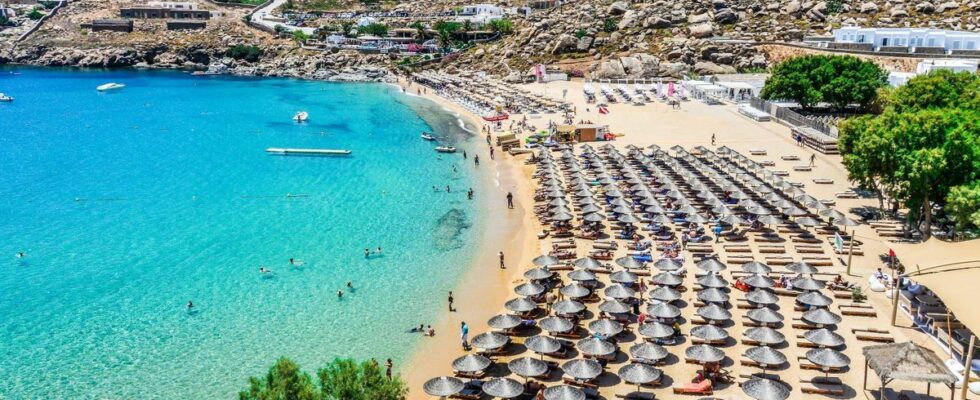Published on
updated on
Reading 3 min.
The online tour operator Evaneos has just launched a tool to measure the degree of exposure to overtourism of 70 of the most popular destinations in the world. If this index is purely informative and must be a key for other tourism players in their selection of stay offers for their customers, it highlights a fundamental aspect to understand in order to properly understand the different issues: there is not one but overtourism. Explanations.
The construction of new hotels in Amsterdam or Bali is over. By 2045, a train should relieve road traffic on the island of Tenerife in the Canaries. Also introducing a tax for cruise passengers planning to dock in Mykonos and Santorini in Greece. Limitation of alcohol consumption in the city center of Majorca and Ibiza at the height of the tourist season in the Balearic Islands… The measures to counter the effects of too high a density of the tourist population are also diverse and varied that overtourism cannot fit into a single definition. There are too many people on some beaches in Thailand. There is also an overpopulation of visitors booking short stays in Barcelona to the point of driving up rental prices in the Catalan capital. There are also excesses around the Trevi Fountain in Rome, when some careless tourists think they are Anita Ekberg as in “La Dolce Vita”…
These are all situations which demonstrate the urgency for travel professionals to take measures and find a response to the major challenge imposed by overtourism. The tour operator Evaneos has just put in place a tool that could help them: a so-called overtourism index. Developed alongside the consulting firm Roland Berger, this informative tool consists of measuring the degree of exposure to overtourism, and even more so to its dangers. The measure established by Evaneoson a common basis taking into account the density of tourists per capita, the density of tourists per km2, seasonality as well as “the maturity of the host country in terms of sustainability”, consists of rating each destination between 0 and 5.
If the methodology is serious, based on a sample of 70 destinations among the hundred most popular in the world, this index above all highlights a fundamental aspect for engaging the tourism sector in a new chapter in its history: making the difference between seaside overtourism, overcrowding of major European summer destinations or even urban overconcentration. Furthermore, not all cities, regions and countries popular with travelers are exposed in the same way, if only because some depend more than others on income generated by tourism. “For each type of overtourism, a suitable response must be provided. We do not manage an influx of tourists in the same way in a large European capital or in a seaside resort in summer. Far from pointing the finger at certain most affected destinations, this index is about being able to think about the most suitable solutions and put them in place.“, underlines Aurélie Sandler, Co-CEO of Evaneos.
In this context, Evaneos concludes that seaside tourism does indeed concern the most exposed destinations with an average index of 4 out of 5. The reason: there are generally too many travelers for a territory that is too small and capable of accommodate as many vacationers over a reduced period of time. This is the case for Cyprus, rated 4.4, but also for Mauritius (4.2), Croatia (3.8%) and Greece (4). Regarding the latter, Evaneos has also decided to no longer market trips to Santorini and Mykonos during the summer period from summer 2025.
Exposure to the dangers of overtourism is slightly less in major European summer destinations, which receive a concentration of vacationers in the third quarter. While a recent YouGov Surveys study indicated that more Spaniards than Italians or French felt oppressed, this tool analyzes overcrowding to the same degree, i.e. 3.6 out of 5 for Spain, Italy and Portugal. France for its part is only at 3.3.
“Less economically dependent on tourism (9% on average of GDP) than seaside areas, these destinations firstly require measures to be put in place to seasonally adjust arrivals and thus promote these destinations in spring or autumn to organize a better distribution of tourists in time. This involves raising awareness among travelers and mobilizing tourism stakeholders to offer offers consistent with seasonal pressure. It is entirely possible to visit Italy or France in April or September to benefit from milder weather and a more comfortable trip with less tourist pressure.“, explains Evaneos.
